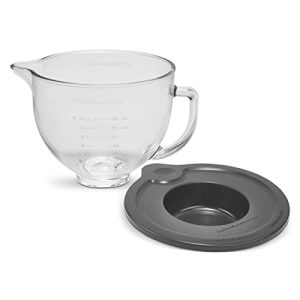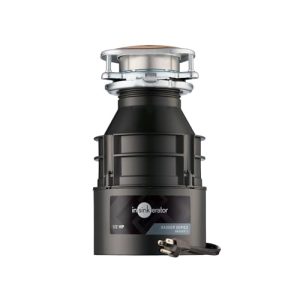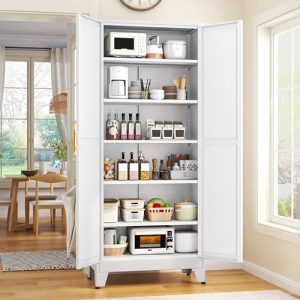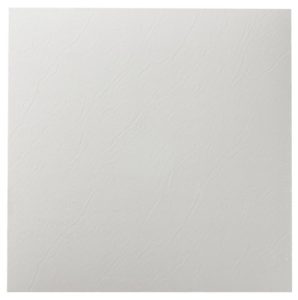Have you ever grabbed kitchen scissors to trim your hair in a hurry? It might seem like a quick fix, but you could be doing more harm than good.
Cutting your hair with kitchen scissors can lead to uneven cuts, split ends, and even damage your hair’s health. Before you reach for those scissors again, keep reading to find out why your kitchen shears are not the best tool for your hair—and what you should use instead to keep your locks looking their best.
Your hair deserves better, and we’ll show you why.
Kitchen Scissors Vs Haircutting Tools
Choosing the right tool for a haircut makes a big difference. Kitchen scissors and haircutting tools look similar but serve different purposes. Understanding their differences helps protect hair quality and achieve better results.
Differences In Blade Design
Kitchen scissors have thick, blunt blades made for cutting food and packaging. Their edges are not sharp enough for precise haircuts. Haircutting tools have thin, sharp blades designed to cut hair cleanly. These blades allow smooth, even cuts without pulling or tearing.
Impact On Hair Quality
Using kitchen scissors can cause hair damage. The blunt blades crush hair strands, leading to split ends and frizz. Haircutting tools minimize damage by slicing hair cleanly. This keeps hair healthy, smooth, and easier to style.
Risks Of Using Kitchen Scissors
Using kitchen scissors to cut your hair might seem like a quick fix, especially when you don’t have professional tools on hand. However, these scissors are not designed for hair and can bring several risks that affect the look and health of your hair. Understanding these risks helps you make a smarter choice about your hair care routine.
Uneven Haircuts
Kitchen scissors often have dull blades compared to hair-cutting shears. This dullness makes it hard to get a clean cut, leaving your hair uneven and choppy.
Have you ever tried to trim your hair and ended up with jagged ends? That’s a common result when using the wrong scissors. Uneven cuts can ruin your hairstyle and require more frequent trims to fix the mistakes.
Hair Damage And Split Ends
Unlike scissors made for hair, kitchen scissors can crush or tear the strands instead of cutting them cleanly. This rough handling causes split ends and weakens the hair shaft.
Once split ends start, they travel up the hair shaft, causing more damage over time. You might think a quick trim saves time, but it can lead to more hair problems that need professional attention later.
Increased Frizz And Breakage
Damaged hair cut with kitchen scissors tends to become frizzy and brittle. The rough edges from blunt cuts make hair strands catch on each other, increasing frizz.
Have you noticed your hair breaking more after a DIY cut? That’s often because the scissors didn’t slice smoothly, causing breakage. Frizzy, broken hair is harder to manage and can make styling a daily struggle.
Hygiene Concerns
Hygiene concerns play a crucial role when deciding whether to cut your hair with kitchen scissors. These scissors come into contact with food and various surfaces, which can harbor germs and bacteria. Using them on your hair can expose your scalp to unwanted contaminants, leading to potential health issues.
Cross-contamination Risks
Kitchen scissors are often used for handling raw meat, vegetables, and other food items. This means they can easily pick up bacteria like salmonella or E. coli.
If you use the same scissors on your hair without thorough cleaning, these harmful germs can transfer to your scalp. Even a quick rinse may not remove all bacteria, increasing the risk of infections.
Have you ever thought about how many surfaces those scissors have touched before you use them on yourself? This question highlights why dedicated hair-cutting tools are safer.
Bacterial And Germ Exposure
Your hair and scalp naturally harbor some bacteria, but introducing external germs from kitchen tools can upset this balance. This may cause scalp irritation or infections such as folliculitis.
Kitchen scissors may also have residues of cleaning chemicals or food particles, which can irritate sensitive skin. Unlike hair scissors, they aren’t designed for hygiene standards needed for personal grooming.
Consider this: Would you use a knife that’s been cutting raw chicken to slice a sandwich without washing it properly? The same caution applies to scissors and your hair health.
Safety Issues
Cutting hair with kitchen scissors might seem like a quick fix, but it brings several safety concerns you should consider seriously. These concerns often relate to how well you can handle the scissors and the risk of injury. Understanding these issues can help you decide if it’s really worth the risk.
Handling And Control Problems
Kitchen scissors are designed for cutting food, not hair. This means their blades are usually thicker and less sharp compared to hair-cutting scissors. You might find it hard to get a clean, precise cut, which can make your hair look uneven or messy.
Have you ever tried to trim your hair and ended up pulling or snagging? That’s a common issue with kitchen scissors due to their lack of smooth cutting edges. They also tend to be bulkier, making it difficult to control small sections of hair.
Without proper control, you may cut too much hair at once or miss spots, leading to frustration and uneven results. This lack of precision can also tempt you to apply extra pressure, increasing the risk of accidents.
Potential Injuries
Using kitchen scissors on your hair increases the chance of accidental cuts. These scissors are not ergonomically designed for hair cutting, so slipping is more likely. Even a small slip can cause painful cuts to your fingers, scalp, or ears.
Think about the last time you used scissors quickly or awkwardly. How often did your hand feel tired or unstable? Such fatigue can cause you to lose grip, especially with kitchen scissors that are heavier and less balanced.
There is also the risk of damaging your hair by cutting it unevenly or causing split ends, which can lead to more hair problems down the line. Is saving a few dollars really worth risking your safety and hair health?
Better Alternatives For Hair Cutting
Cutting hair with kitchen scissors can damage strands and cause uneven cuts. Using proper hair scissors or visiting a professional ensures cleaner, safer results. These tools are designed to handle hair texture without causing split ends or rough edges.
If you’ve ever considered cutting your hair at home, you’re not alone. Many people find themselves tempted to use kitchen scissors, but this can lead to uneven cuts and damaged hair. Instead of reaching for those dull blades, there are several better alternatives that can provide you with a professional-looking haircut without stepping out of your home.Choosing The Right Hair Scissors
Investing in a good pair of hair scissors is a game-changer. Hair scissors are specifically designed to cut hair smoothly without causing split ends. Look for scissors with sharp, stainless steel blades and an ergonomic design to ensure comfort while cutting. Consider the size of the scissors as well; smaller scissors offer more control for detailed work around the face and neckline. A personal tip: keep your hair scissors separate from other household scissors to maintain their sharpness and integrity.Using Clippers And Trimmers
Clippers and trimmers are excellent tools for those who prefer shorter hairstyles. They come with attachments that help you achieve different lengths with precision. If you’re aiming for a buzz cut or a fade, clippers can make the process quick and easy. Don’t be intimidated by these tools; many are user-friendly and come with guides. If you’re new to using clippers, practice on a less visible area first to gain confidence. Have you ever tried using clippers and noticed how even and professional the result looks compared to scissors? By opting for hair-specific tools, you not only protect your hair but also gain the satisfaction of a job well done. So, before you reach for those kitchen scissors, consider these better alternatives to ensure your hair remains healthy and stylish.Tips For Diy Haircuts At Home
Giving yourself a haircut at home can save time and money. It requires some care and the right approach. Knowing the basics helps avoid mistakes and keeps hair healthy. Follow simple tips to make your DIY haircut neat and safe.
Preparing Your Tools
Use sharp scissors made for hair cutting. Kitchen scissors are usually dull and can cause uneven cuts. Clean tools prevent hair damage and infections. Have a comb, hair clips, and a mirror ready. Work in a well-lit area to see clearly.
Techniques For A Clean Cut
Start with dry or slightly damp hair for better control. Comb hair to remove tangles before cutting. Cut small sections at a time to avoid mistakes. Hold hair between your fingers to keep it steady. Cut straight across or at a slight angle for natural looks.
Frequently Asked Questions
Is It Safe To Cut Hair With Kitchen Scissors?
Using kitchen scissors for hair is not safe. They are dull and can cause uneven cuts and hair damage. Hair scissors are sharper and designed for clean, precise cuts, ensuring healthier hair and better styling results.
Can Kitchen Scissors Damage Hair Quality?
Yes, kitchen scissors can damage hair quality. Their blades are not sharp enough, causing split ends and rough cuts. This leads to frizzy, unhealthy hair over time. Using proper hair scissors helps maintain hair strength and smoothness.
Why Are Kitchen Scissors Not Ideal For Haircuts?
Kitchen scissors lack precision and sharpness needed for haircuts. They can pull and tear hair rather than cut it cleanly. This results in uneven lengths and hair damage. Professional hair scissors ensure a neat and healthy cut.
What Happens If I Regularly Cut Hair With Kitchen Scissors?
Regularly cutting hair with kitchen scissors can lead to split ends, breakage, and frizz. It damages the hair shaft and causes uneven trimming. This reduces hair health and growth potential. Use hair scissors for consistent, healthy trims.
Conclusion
Cutting hair with kitchen scissors can cause uneven cuts and damage. These scissors are not sharp enough for hair and may pull or split strands. Using proper hair scissors ensures a clean, smooth cut. It also helps keep hair healthy and looking good.
For best results, choose tools made specifically for hair. Taking care with your scissors protects your hair’s strength and shine. Avoid using kitchen scissors to keep your hair in top shape.

Sophie Hartwell is the founder of KitchenQuik.com, where she shares kitchen tips, smart cooking hacks, and the best product picks to make everyday cooking easier and more enjoyable.




